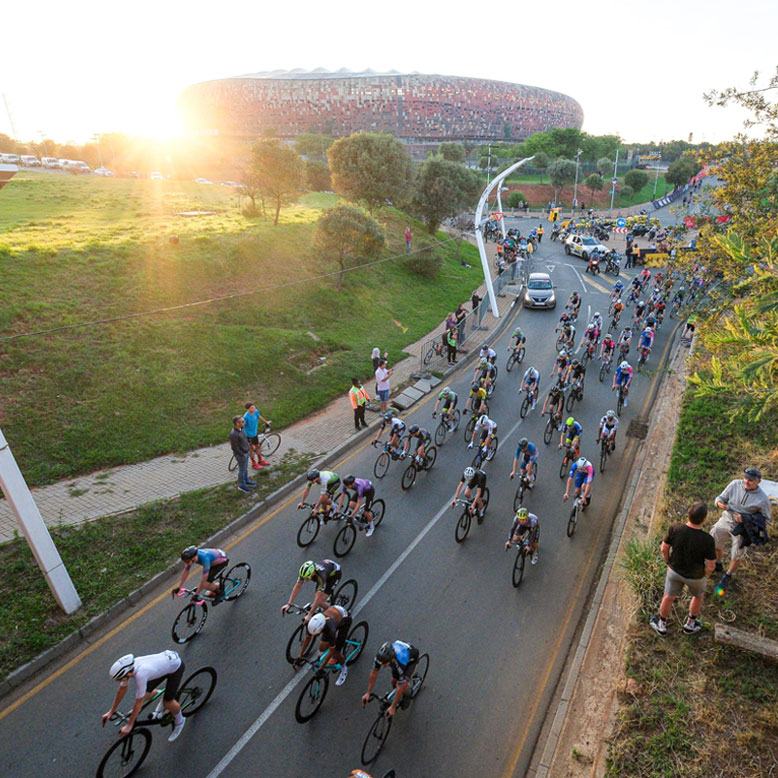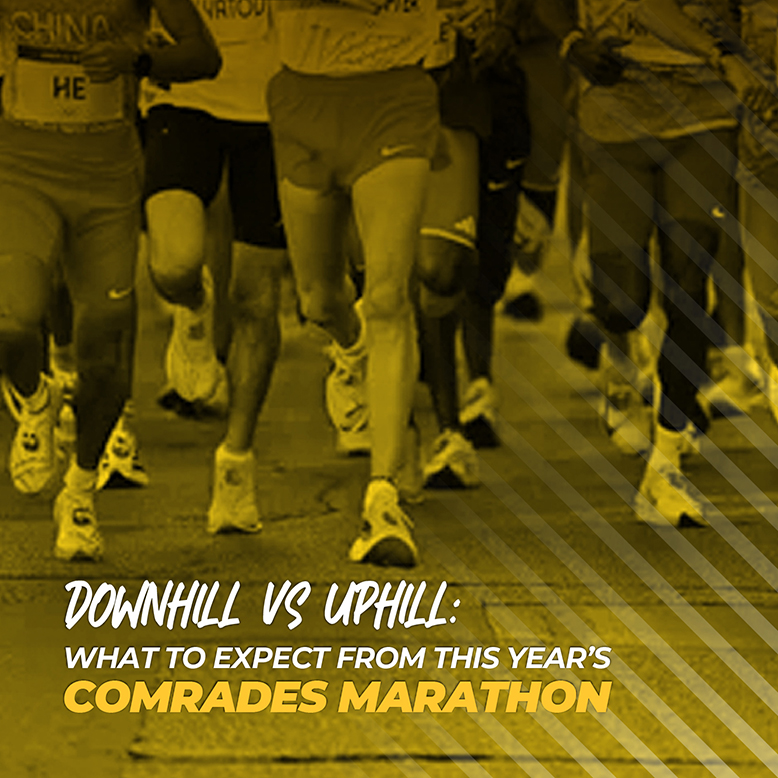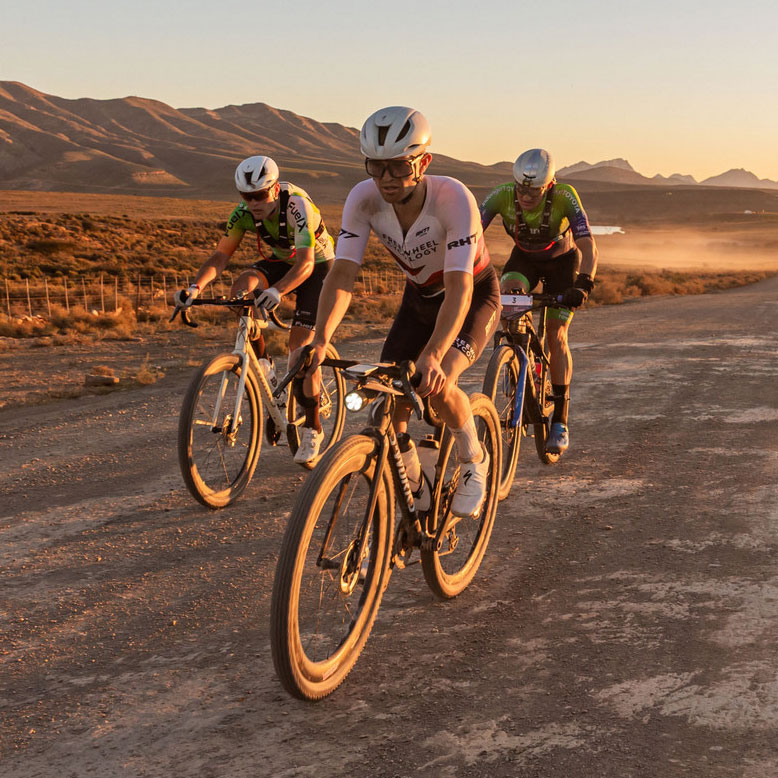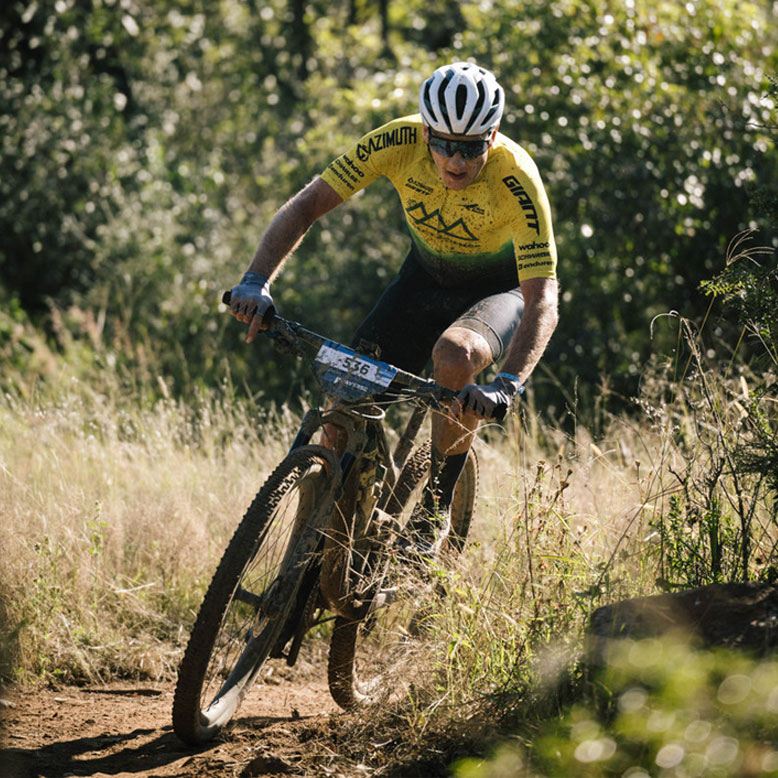
My fascination with the Giant’s Cup trail started in 2014 when we were on holiday in the area.
I ran from the Premier Resort Sani Pass hotel, back to Castleburn where we stayed. It’s a 30km stretch on the route. I met a guy named Spurgeon somewhere out on the trail, who stated that he was scouting the route for a race.
A legend is born
A year later, the first Ultra Trail Drakensberg (UTD) happened. And a year after that, in 2017, Landie and I participated in and won our respective categories in the 62km race. By then, we had completely fallen in love with the Drakensberg’s trails and I still think it is one of the best places in the world.
After a few years of racing abroad, we finally returned to UTD in 2021. I was interested in racing something farther than the 62km race. I already had my eye on the 100-miler in 2020, but we missed it due to COVID-19.
However, with a newborn and toddler in the house this year, my training was not sufficient to tackle a 100-miler so I decided to race the 100km instead – I was just thankful to be racing again.
Runners eager to race
This year served up a very strong racing field. It was probably one of the strongest fields in a 100km race in the last two to three years in South Africa.
Lots of young talent was on show, including Rory Scheffer, Robert Rorich, Brendan Lombard, Comrades runner Admire Muzopambwa, Sani Stagger winner Phillip Shezi, and many more. Previous winner Stuart McConnachie was also there. Everyone was hungry to race.
We started in the dark and Scheffer immediately sped off. I didn’t try to chase him. I hoped that Lombard, who is also a fast runner, would race him and one of them would fall behind, giving the rest of us a chance. Muzopambwa and I soon settled into a comfortable pace and ran together most of the way.

Spectacular landscapes
I really looked forward to going down Sani Pass because I love downhills. And Sani was almost 28km of sheer pleasure, mostly on trail, with a few slight climbs in between.
As expected, Sani took my breath away. Stunning views of the sunrise and green, green grass covering the highs… It was enough to satisfy my thirst for adventure and the outdoors – it was exactly what I came for.
There is a solitude that comes with traversing the rolling mountains. When combined with the feeling of God’s presence, it’s simply something you have to experience to understand.
The middle stage
We descended to the hotel and it was great to see Landie for the first time, who helped me with a quick transition. Muzopambwa and I then settled into a good pace. Shezi managed to pull away from us as we followed the trail up a very steep climb.
I felt quite comfortable in the first 36km, which was exactly how I wanted to feel. I came into the aid station in fourth position and was feeling strong. I was still in contact with the runners in second and third position, which gave my confidence a good boost. Scheffer, however, was well away. Only a mistake on his part would likely bring the field back to him.
Then we hit the flat section of jeep-track, which my least favourite terrain on any trail. Both Muzopambwa and Shezi pulled away from me, leaving me in fourth position on my own. Rather than panic, I focused on what I knew was important in any 100km event: eating and hydrating well, and enjoying the trails.
Muzopambwa and I were running together again as we approached the 46km mark, where we found Scheffer walking. As we overtook him, he mentioned something about his calf. We thought we were racing only one more runner in the front at that stage.
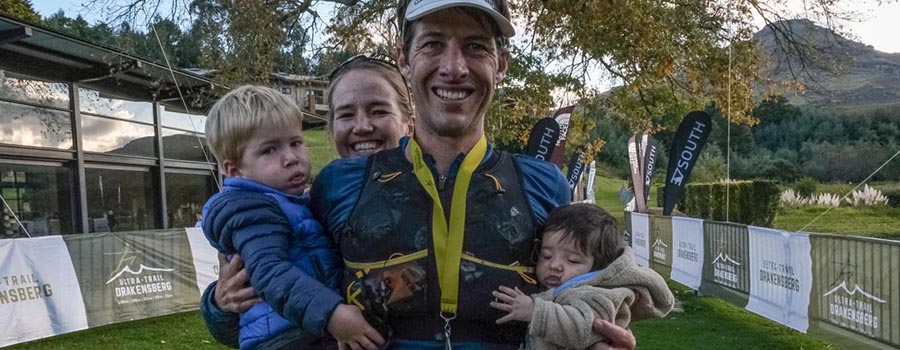
Over halfway
As is typical in 100km races, you start to lose focus around the midway point – it’s not halfway yet and you start to see more uphills than there really are.
Muzopambwa and I started to slow each other down, instead of pacing each other. When he walked, I walked. When I walked, he walked…
When we reached the aid station at 50km, I was hoping to see the family and get a quick refill of supplies and maybe a pick-me-up for my mood.
But there was no trace of Landie, my mom, Christopher or Anzel, or our car. Something could have happened to the car, or them. I ended up worrying more about them than myself. But I decided to run to the next aid station.
Thankfully, the aid stations were well stocked with everything we needed. Muzopambwa and I arrived at the 58km aid station, with Shezi leading by 15 minutes.
We had a medical check, which I passed, surprisingly. You somehow hope that they would find something wrong so that someone else can tell you to stop running. But there was no reason to stop, of course. I could still put one foot in front of the other. The pain was more mental, and it’s amazing how much of a difference a bit of support can make.
Recharged and ready
That was where the race really changed for me. Landie joined the race and she paced me for the next 15km. It was my first time running with a pacer and it helped a great deal. It changed the way I thought and believed during those kilometres.
More than motivation, she provided consistent pacing and took over all the thinking. She reminded me of my form, rhythm, eating, and hydration… all the things I did not want to or remembered to do.
Hearing from someone else that I could do it and that I was doing well was refreshing, to say the least.
Landie kept us running at 05:20/km pace on the flats. It was comfortable, but at that stage I could not run any faster. Muzopambwa ran with us for a few kilometres.
A late charge
Then, out of nowhere, Scheffer appeared again. I didn’t think he was still in the race, and he scared me a bit because he overtook us quite easily.
That moment felt like it was game over. I ran past the next aid station in an attempt to save time. It worked and I managed to maintain contact with Scheffer, and Muzopambwa joined me again.
I knew that I had to keep going and Landie’s words kept us in the race. “It’s not over until the end… Don’t give up, the one who gives up first will lose the battle.”
I can’t remember racing that hard in a 100km before – the positions changed constantly up front. I arrived at the 73km aid station just seconds before Scheffer. However, a lot went wrong after that stop. It was jeep-track and Scheffer outran me quite easily.
I could still see him at the next aid station but Landie’s pep talks no longer rang in my ears and she had stopped pacing us.
Hanging on
I was in third position and I knew one mistake would allow the others to overtake me. We entered the Giant’s Cup trail and the 62km and 32km racers joined us bit by bit.
Once again, the Drakensberg was showing off. Those green, grassy hills and streams, and many hikers and campers dotted the mountains. Camping in the Drakensberg and disappearing from networks for a few days is something all South Africans should do once in their lives…
Thankfully, I ran with strength again and managed to catch Shezi just before the last aid station at Copham. It was downhill and Shezi seemed uncomfortable.
That left me racing with some hope in second place. But, by then, you don’t care about positions anymore. You simply run to finish.
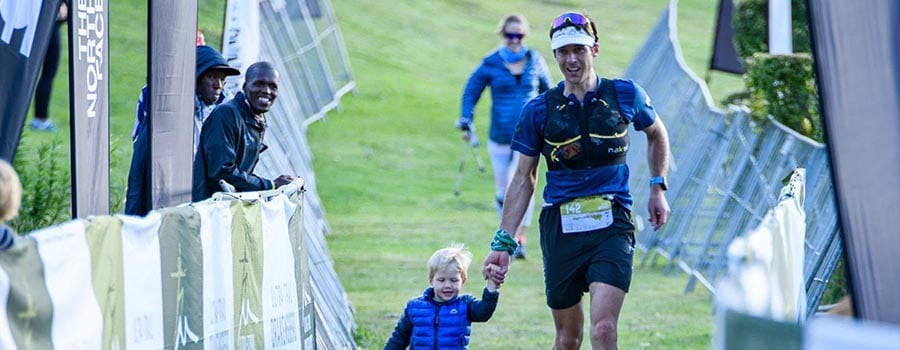
The home stretch
There was one more hill and 12km left. I pushed to avoid being surprised again, motivated by the approaching finish line.
I climbed well. However, I lost some time on the descent. My tummy was cramping and I messed around, which is not uncommon during a 100km race.
I then noticed a runner behind me. I thought it was Muzopambwa and started to sprint without looking back. It was the last three and a half kilometres to the finish line and I came in second.
Prodigal Kumalo crossed the line two and a half minutes later to win the 32km race. It was not Muzopambwa!
Lessons learnt
That experience reaffirmed for me once again that everything in a 100km is mental. It’s when you tell yourself you are tired that you feel fatigued. You can still run up a hill or muster up enough energy from somewhere inside you to sprint against a fresher 32km runner if you believe you can.
Your mindset is either a win or a lose. Everyone has got a few war stories after a long race. Pushing through, fighting those thoughts, praying… That’s what makes us stronger, what makes us come back for more.
It was good to fight for 11 and a half hours, and I almost reached my fastest 100km time in the process.
But Scheffer deserves the win after coming back from almost pulling out. Carrying on and racing hard to take the win is an incredible performance.
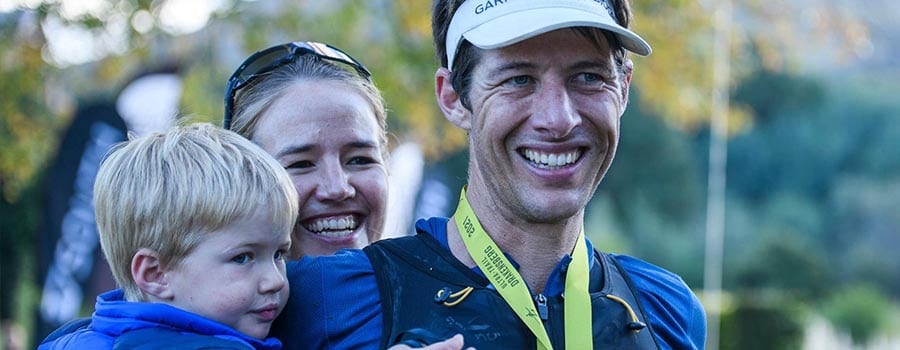
Equipped for success
I’m thankful for our sponsors. They make it easy and worthwhile to travel this far. We’re definitely equipped with the best gear out there, which enables us to compete in the elements.
And my nutrition strategy went 100% to plan. I never felt that I hit a complete wall. Whenever I could not eat, I managed to sip on Biogen Cytogen. I never got tired of the neutral taste and I knew it contained enough calories to sustain me.
I also really enjoyed all the good fats and protein from my Buttanut sachets, which kept me strong the natural way. And a big thanks to Häzz coffee for giving me an extra boost and smile before (and after) the race.
I ran with my Naked HC Vest, which was a 100% fit for the UTD. I could manage all my compact K-Way gear and compulsory kit, which enabled me to run incredibly free.
Adidas Terrex helped me to maintain a fantastic grip throughout the race. It’s the Drakensberg, yet I never slipped, never fell, never had reason for panic. I really trust my shoes and enjoy being able to take the risks and race my heart out.
And, of course, Garmin navigation really saved the day, I had to check my watch numerous times to stay on the route. I loved being able to listen to music from my watch with Bluetooth earphones, which I really needed on those flats.
And it was lovely to see the 30 South team at the race! They gave us a few pep talks and some great support, all while their sunglasses provided me with excellent vision in both the icy cold winds and daylight hours.
Lastly, a big shout out to Emperor Asset Management for making a lot of what we do possible.
In the end, it’s not about who is or isn’t there. It’s not about your position. It’s about your race and your personal battle. Finish strong


